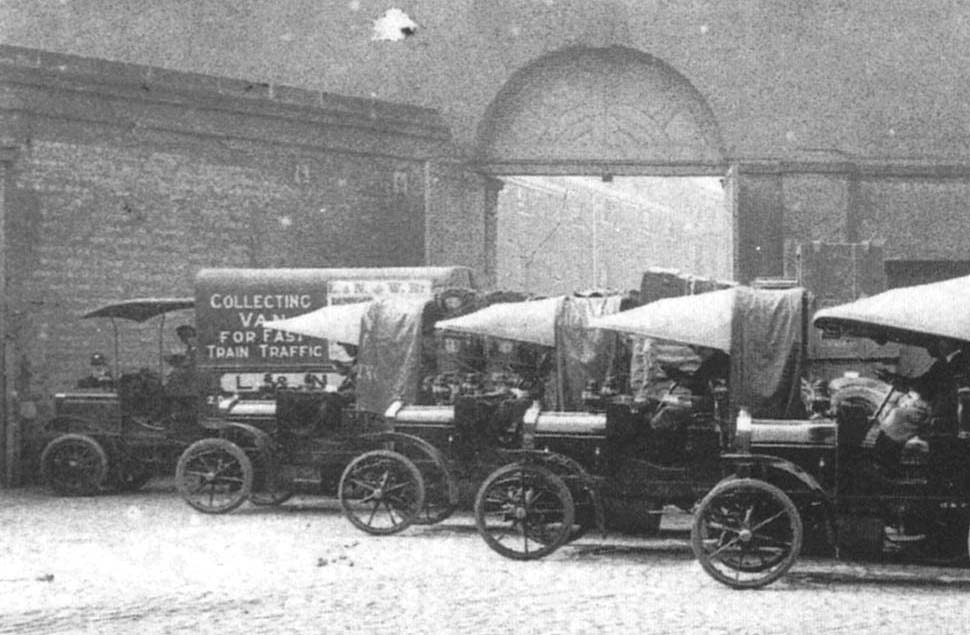|
|
 |
 |
|
London North Western
Railway:

Midland
Railway:

Stratford
Midland Junction Railway
|

|
LMS Route: Rugby to Wolverhampton
LMS Route: Birmingham New Street to Lichfield
LMS Route: Birmingham New Street to Soho and Perry
Barr
Curzon Street Goods Station: lnwrcs1497a
 |
Close up of image 'lnwrcs1497' showing the fleet of
primarily light motor lorries together with a sole example of a lorry for
medium loads. The light motor lorries were built with a flat loading deck
behind an open cab which, like its horse-drawn equivalent, had a folding
tarpaulin which could be slid forward to behind the cab where folded up as a
concertina it would allow larger loads to be carried. The other vehicle on the
left is larger and its tarpaulin covers appear to be more fixed and shaped
differently. Both vehicles are fitted with wooden wheels and solid rubber
tyres, another illustration of how the evolution of transport was shaped by its
historical roots in horse-drawn transport. The first motorised lorry style
vehicle appeared in the 1800s in the form of a steam truck. The introduction of
petrol engines was the next development but as these were only equipped with
two-cylinder engines their capacity wasn't as great as we might have thought.
It was the impact of developments during the First World War which saw real
advances in the power output being made. In addition, to an increase in the
number of cylinders being deployed - up to eight - other advances included
fully enclosed cabs and electric lighting.
 back back

|
|
|
